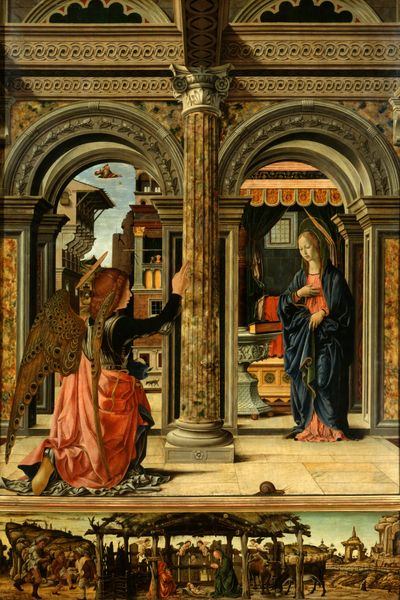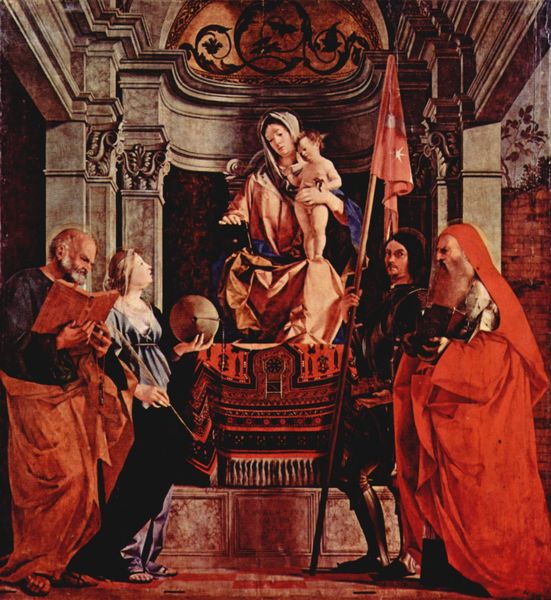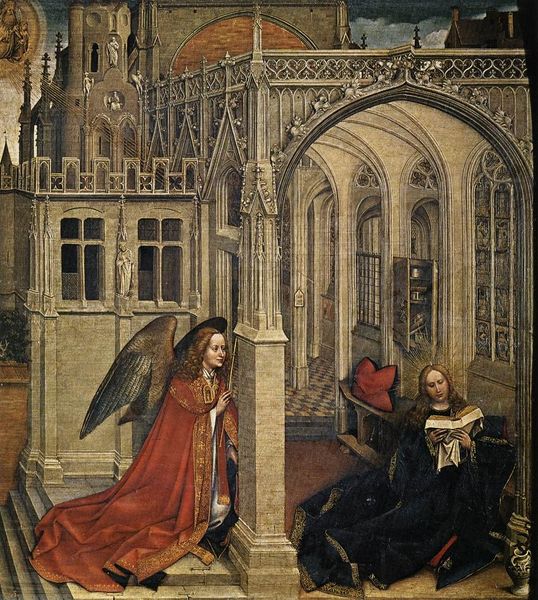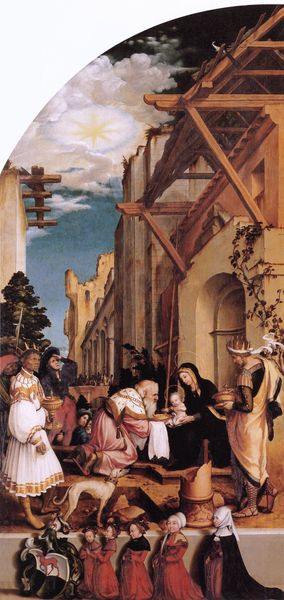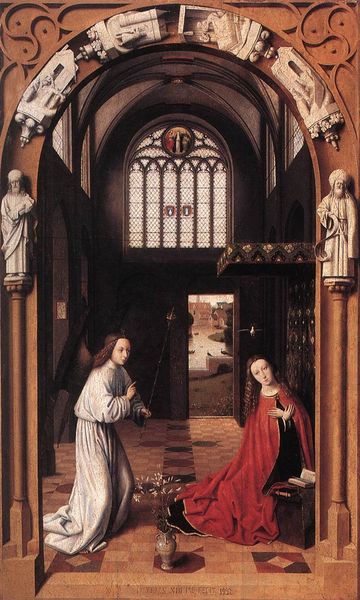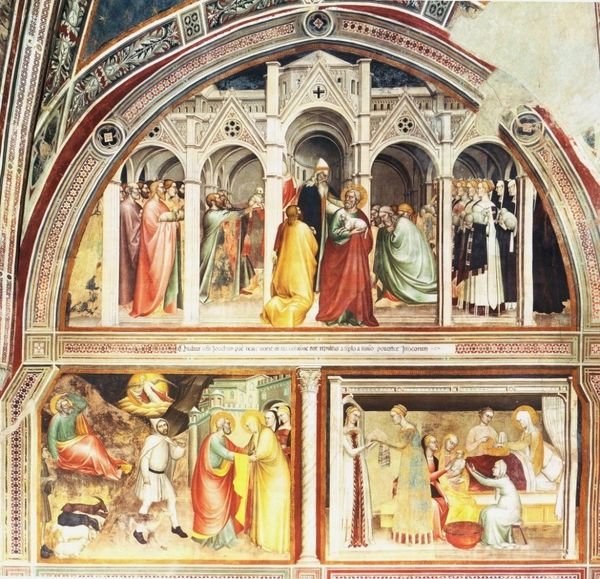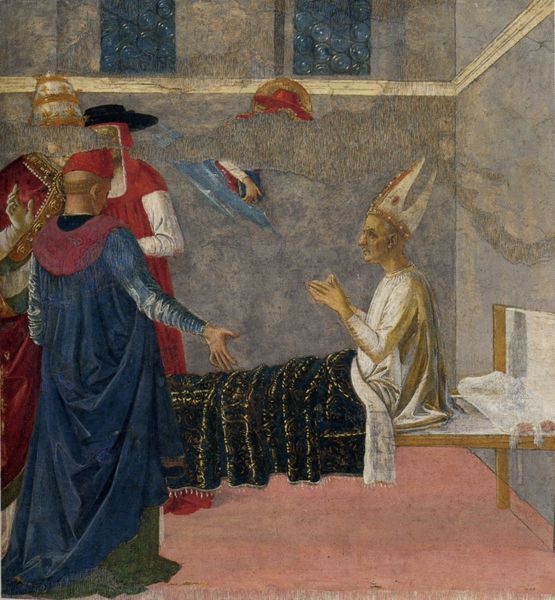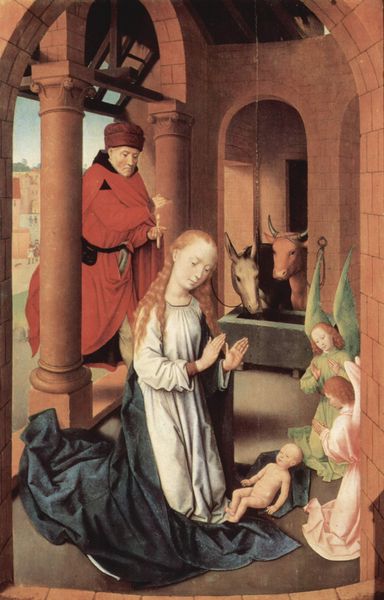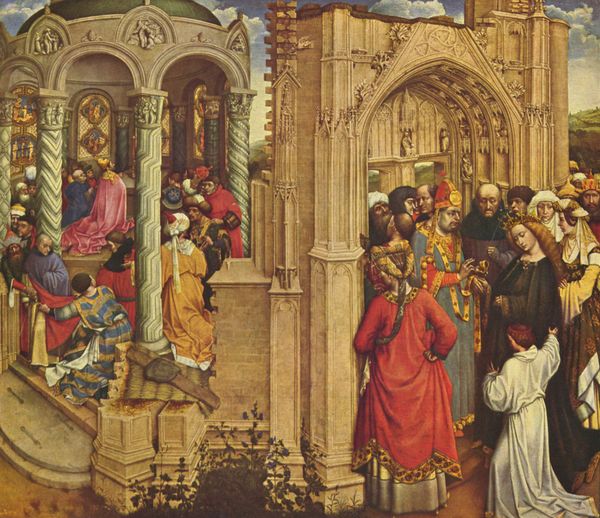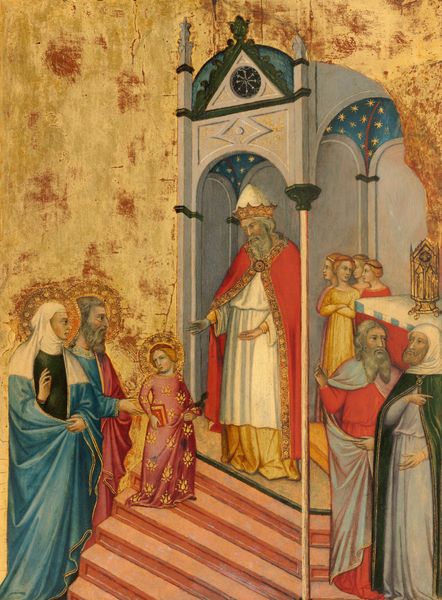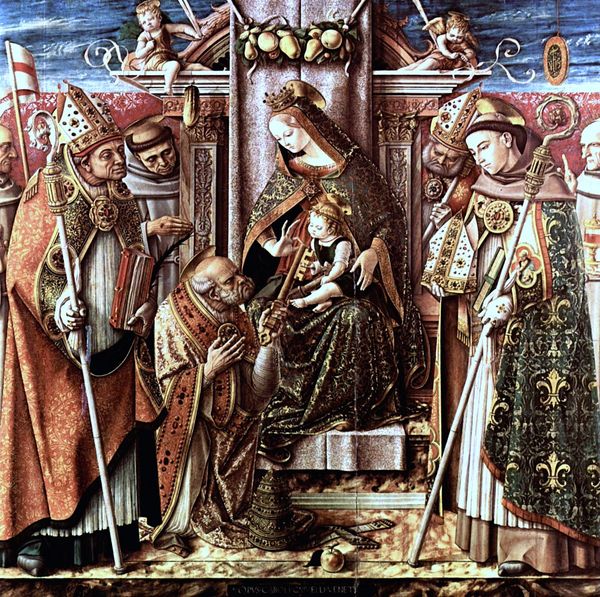
Mass of Saint Gregory 1415
0:00
0:00
robertcampin
Royal Museums of Fine Arts of Belgium, Brussels, Belgium
panel, painting
#
panel
#
painting
#
figuration
#
historic architecture
#
christianity
#
history-painting
#
early-renaissance
#
mixed media
#
christ
Dimensions: 85 x 73 cm
Copyright: Public domain
Editor: This is Robert Campin’s “Mass of Saint Gregory,” a painting on panel from 1415. The more I look, the more details I discover: the figures, the objects behind the altar. It’s quite busy and creates a strangely unreal space, yet the painting possesses a unique gravity. What elements of composition strike you as most significant? Curator: Notice the meticulous arrangement of forms. Campin uses a rigorous spatial construction to achieve balance. The placement of Christ above the altar, almost hovering, immediately draws the eye. Its verticality intersects with the horizontality of the altar space, which is enhanced with the figures kneeling, emphasizing a structural relationship to the setting’s architecture of vertical pillars and arches on the left, and the implied hanging devices above the altar. What affect do you think is achieved by contrasting those design approaches? Editor: I see how the composition steers my eye from grounded forms to something much less corporeal. The use of implied versus strongly delineated line weights seems important to the impact of both elements as well. The eye moves around a fair bit. Curator: Exactly. Now, observe the contrast in surface textures. Campin has used subtle shifts in paint application, particularly within the vestments, to enhance depth. There’s an emphasis on light, and its variations, rather than overt symbolism. It creates volume as well as movement with implied folds, enhancing the visual dynamics across the piece. Editor: That's interesting. I was focusing more on symbolic meaning initially. I do now see how the rendering creates a sort of interior movement within the frame of the image. Curator: Focus, rather, on the pure visual qualities. This approach to his forms demonstrates his skill and elevates his technique beyond purely narrative function. How different is the affect created by that conscious rendering of details? Editor: I think I am more able to consider the painting as more of an integrated compositional exercise, rather than reading all the elements separately and in terms of subject matter alone. Curator: Precisely. Appreciating Campin's formal structure enriches, and perhaps changes, one’s viewing experience altogether.
Comments
No comments
Be the first to comment and join the conversation on the ultimate creative platform.
